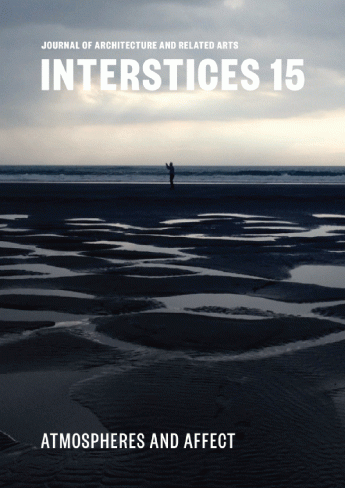Earthquake weather and other tentative correspondences
Abstract
The term ‘earthquake weather’ has had a fluctuating history being understood as both an observable event and a recurring fiction. The starting point for the term is usually associated with Aristotle who is said to have promoted the idea that winds trapped in underground caves caused earthquakes. Nineteenth century reports on the occurrence of earthquakes in Aotearoa New Zealand frequently link seismic activity with carefully detailed weather conditions.
The nature of earthquake weather is variable with claims of calm expectancy, hot sultry weather or storms. Earthquake clouds currently have had some technical backing even as scientific reports largely deny associations between weather and earthquakes. The desire for such an association between the two events is of interest to this paper.
Elizabeth Diller writing about the Blur project pointed out that, “Contemporary culture is addicted to weather information. … Our cultural anxiety about the weather can be attributed to its unpredictability.”[1] While weather is easily imagined as affective atmosphere we seek to illuminate the obdurate material atmosphere associated with earthquakes in an attempt to navigate the indeterminate atmospheric divide between stability and movement.
Peggy Kamuf, writing on approaches to the work of Hélène Cixous, models a potential attitude for such a material writing project which might be to acknowledge
“A matter of some gravity: that which pulls towards the earth, the lowest level, below ground even, the weight and volume with which heavier substances displace air or water. We say a matter is grave to remind ourselves to ponder it, to weigh it carefully, to exercise acute ethical vigilance … If the matter is grave, then, by definition it should not be taken lightly.”[2]
However, Kamuf suggests a further angle of approach, which holds as imperative that one’s subject not be crushed by the weight of approach but, rather, be permitted to “escape the force of our gravity.”[3] From such an angle, “The most responsible and serious approach advances carefully and slowly, but above all lightly - which may mean obliquely, or imperceptibly, or even not at all”.[4] Here, as Hiddleson argues, Cixous’ works, “participate in the genre of theory, but allow the object of their theorising to shift and mutate, in their enjoyment of poetic associations, parallels and allusions.”[5]
Like Kamuf’s dilemma of the love note, in which one does not wish to crush one’s lover under the weight of one’s own desires, Victorian and Edwardian correspondents of earthquakes and usual weather offer, time and again, paths of escape. Unexpected weathers and seismic activities are delicately laid together, but with a marked silence about the nature of their relationship. In this paper we explore the relationship offered by the correspondants through a tentative poetics of atmosphere consisting of text and accompanying images.
[1] Elizabeth Diller, “Blur/Babble”, Anything, 2001, 132-139.
[2] Peggy Kamuf, “To give Place: Semi-approaches to Hélène Cixous”, Yale French Studies, no. 87, 1995, 68.
[3] Peggy Kamuf, Book of Addresses. California: Stanford University Press. 2005, 114).
[4] Peggy Kamuf, Book of Addresses. California: Stanford University Press. 2005, 114).
[5] Hiddleston, Jane. 2010. “In or out? The Dislocations of Helene Cixous” pp. 47-76. Poststructuralism and Postcoloniality: The Anxiety of Theory. (2010:51)


